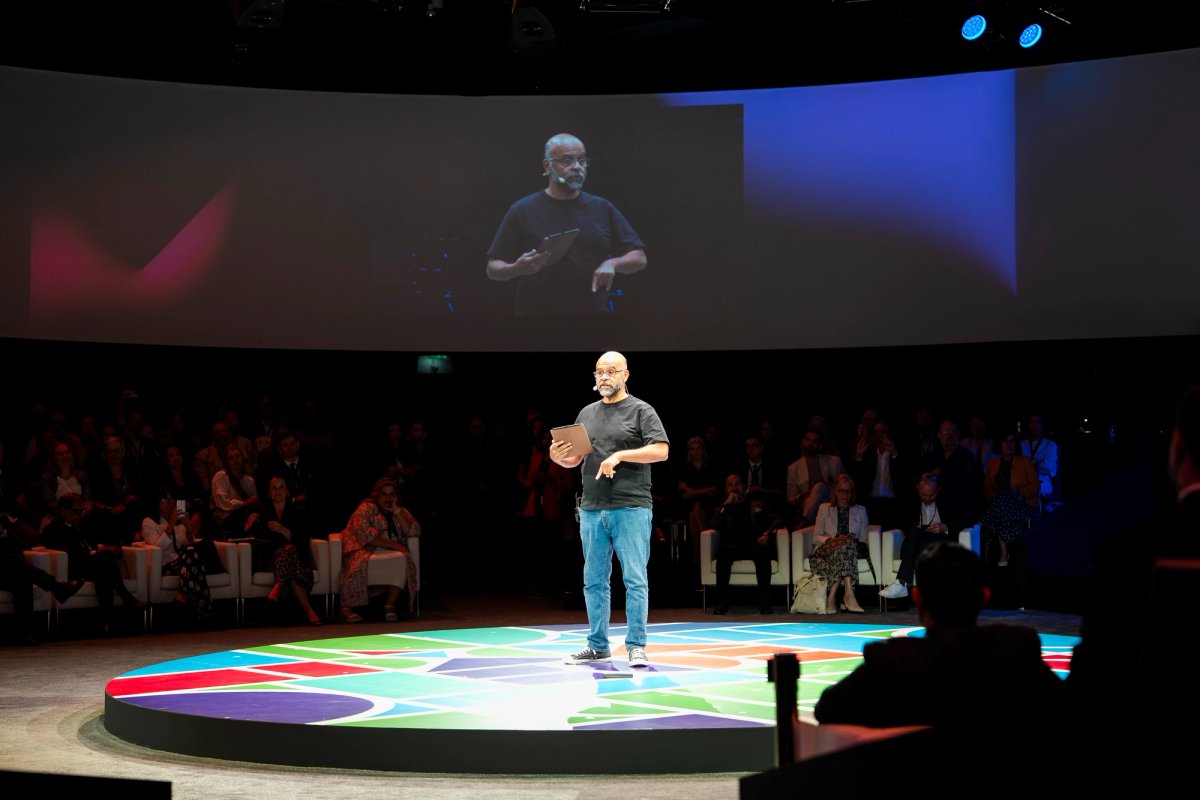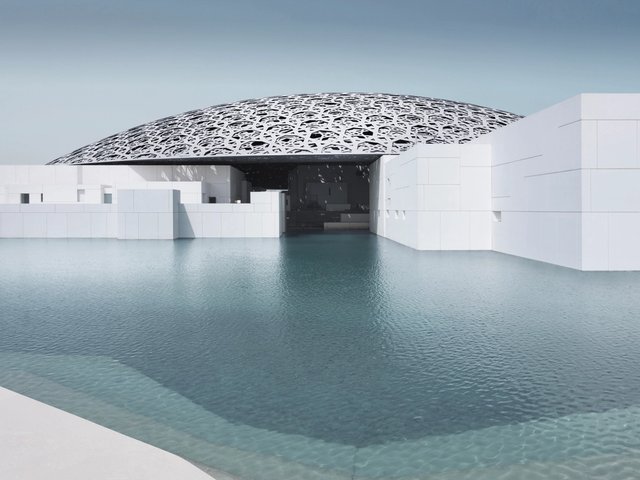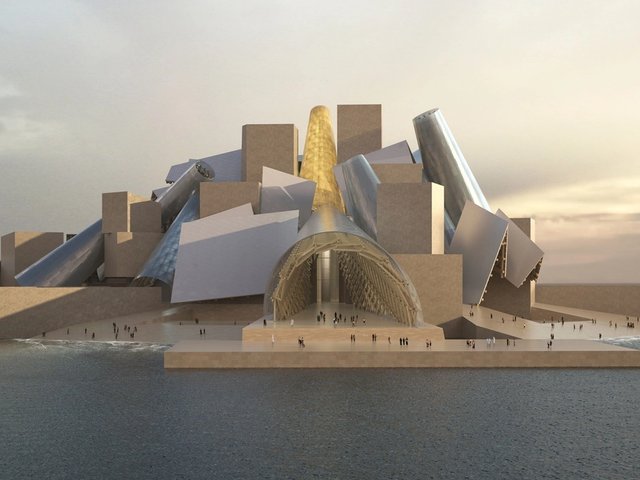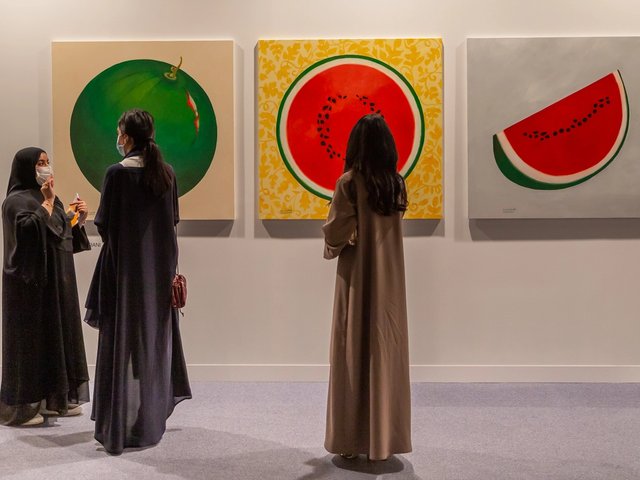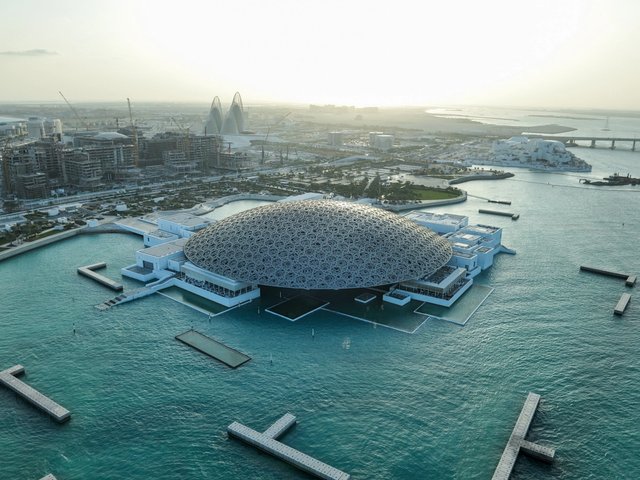An air of anxiety pervaded the opening of the seventh Culture Summit Abu Dhabi (27-29 April) as, one after another, speakers set out the challenges the arts face. The rapidly changing global order, the climate crisis and the rise of artificial intelligence (AI) that threatens millions of jobs in the creative sector were on a lengthening list.
Tim Marlow, the director of the Design Museum in London and one of the events’ co-hosts (the other was Mina Al-Oraibi, the editor-in-chief of UAE newspaper The National), was only half-joking when he said: “I’ve looked into the future and it’s terrifying.”
The gloom was somewhat at odds with the location. Saadiyat Island, a low-lying island close to Abu Dhabi city centre, is a $27bn government development project started in 2009. Scheduled for completion this year, it has been transformed from a sandy strip to a luxury residential and tourist resort and is home to several major museums. These include Louvre Abu Dhabi, the near-completed Zayed National Museum and Guggenheim Abu Dhabi, due to open next year. With its opulent beachfront hotels and villas, landscaped pools and palm trees, it felt almost unreally insulated from the unpleasantness of the wider world.
The summit did not go so far as to bill itself the “Davos of the art world” but people in the region say that it was always the intention. In keeping with the aspiration, its title was “Culture for Humanity and Beyond”. Its line-up was also suitably high flown: three former prime ministers, 12 international culture ministers, several members of Emirati royal families, and public figures such as the architect Frank Gehry and the philosopher Susan Buck-Morss. Sessions were peppered with performances from world music stars such as Angélique Kidjo, and artists and architects including John Akomfrah, Thomas Heatherwick and Jennifer Allora were among the speakers.
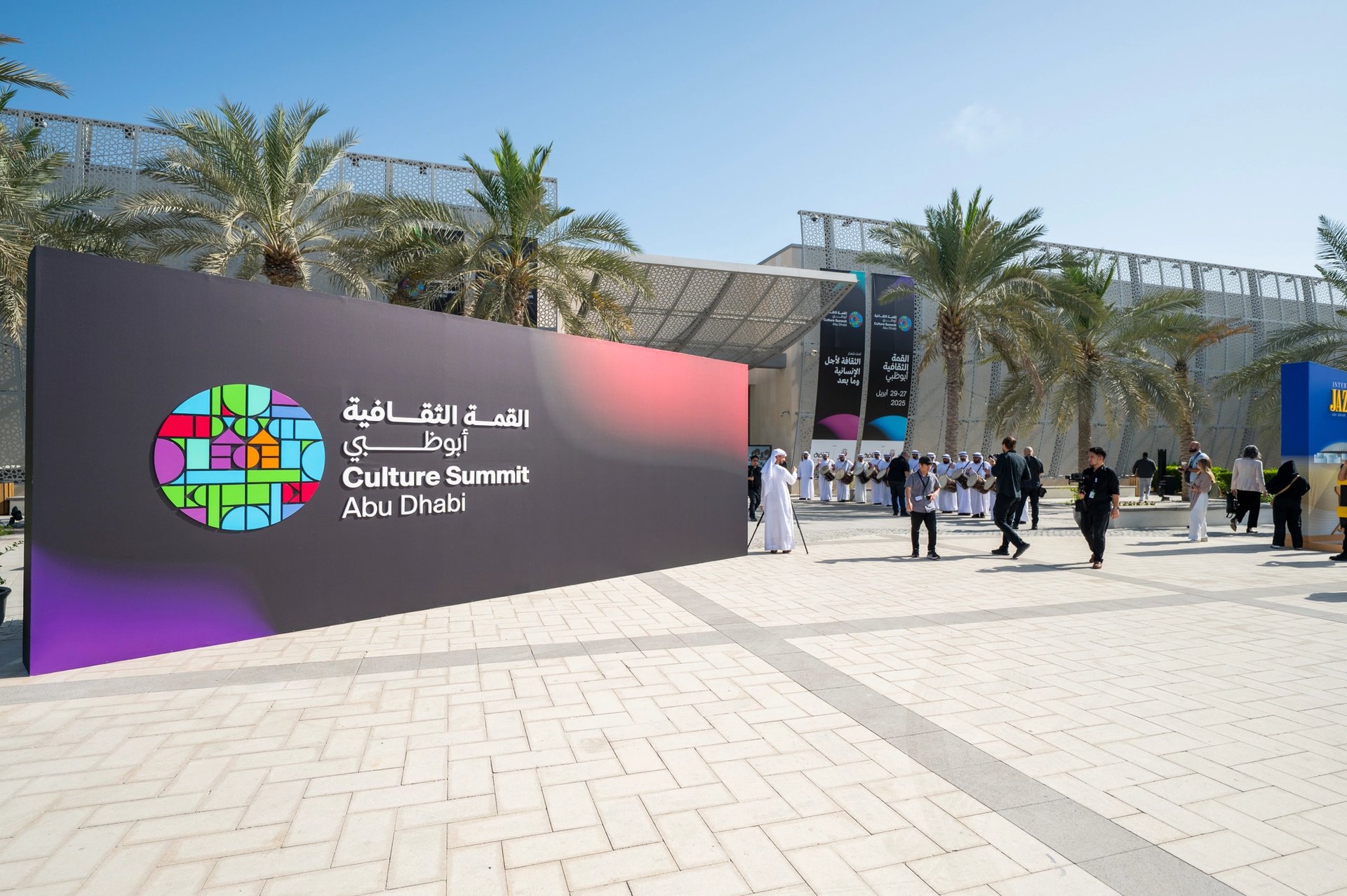
The Culture Summit took place on Saadiyat Island Photo: courtesy of the Department of Culture and Tourism – Abu Dhabi
Paolo Petrocelli, the head of Dubai Opera which opened in 2016, said: “The summit sends a message that this region is becoming a global platform for the arts, like New York, London or Milan.” He encouraged everyone to “come and see what Abu Dhabi and Dubai, with all the investment in buildings and projects, has become”.
AI was the major theme of the conference, perhaps partly because the Abu Dhabi government has thrown its weight behind the tech sector and partly because many fear its impact on creators.
The impact of AI on the arts
Mohamed Khalifa Al Mubarak, the chairman of the Department for Culture and Tourism, told the summit that Abu Dhabi’s ambition is to the be one of the largest tech hubs in the world. But he also said: “We need to address a problem that we are all facing, which is how are we going to safeguard culture? How are we going to safeguard opportunities for creative people to create and flourish in future.”
Whether or not it was the intention, many found the opening presentation on the subject by Mo Gawdat, the former chief business officer of Google X, alarming. He described “how the magnification of current human systems using AI will lead to a challenging 15 years”, predicting largely negative impacts on “freedom, accountability, human connections, economics, reality, innovation and creativity, and power”. Not everyone was convinced by his assertion that everything will be all right once AI fully takes over — what he called “machine supremacy”.
Alternative points of view were presented by artists such as Ayoung Kim and Sofia Crespo who use AI in their work, and by the directors of arts institutions who argued that there is no substitute for “live” cultural experiences.
Ummi Bashir, the principal secretary in Kenya’s department of culture and heritage, argued that technology is helping keep traditions like traditional Maasai beading alive in the fashion industry. “AI is a super tool for inclusivity, people at the bottom of the pyramid,” she said. “AI allows a woman in the Maasai Mara to find business intelligence: what are the colour trends, what is fashionable in New York or Abu Dhabi, how she can market her products on a global platform.”
At the closing panel, speakers agreed that the cultural sector needs to hold tech firms to greater account although no-one seemed clear about how to do this.
Although not an official theme, there was a clear intention to shift the dialogue towards the Global South. Many of the speakers across all the panels came from Africa, South America, the Indian sub-continent and of course the Middle East. A number of discussions centred on wider definitions of art, particularly artists and designers using traditional materials — sand, glass, wood, weaving — or expert craft skills to build international careers.
The benefits of museums to local communities
Reshaping the role of global art institutions was also on the agenda. But given the seniority of the speakers (Glenn Lowry, the outgoing director of the Museum of Modern Art in New York gave a keynote address) and the amount Abu Dhabi has spent building major museums, no-one was seriously challenging institutional authority.
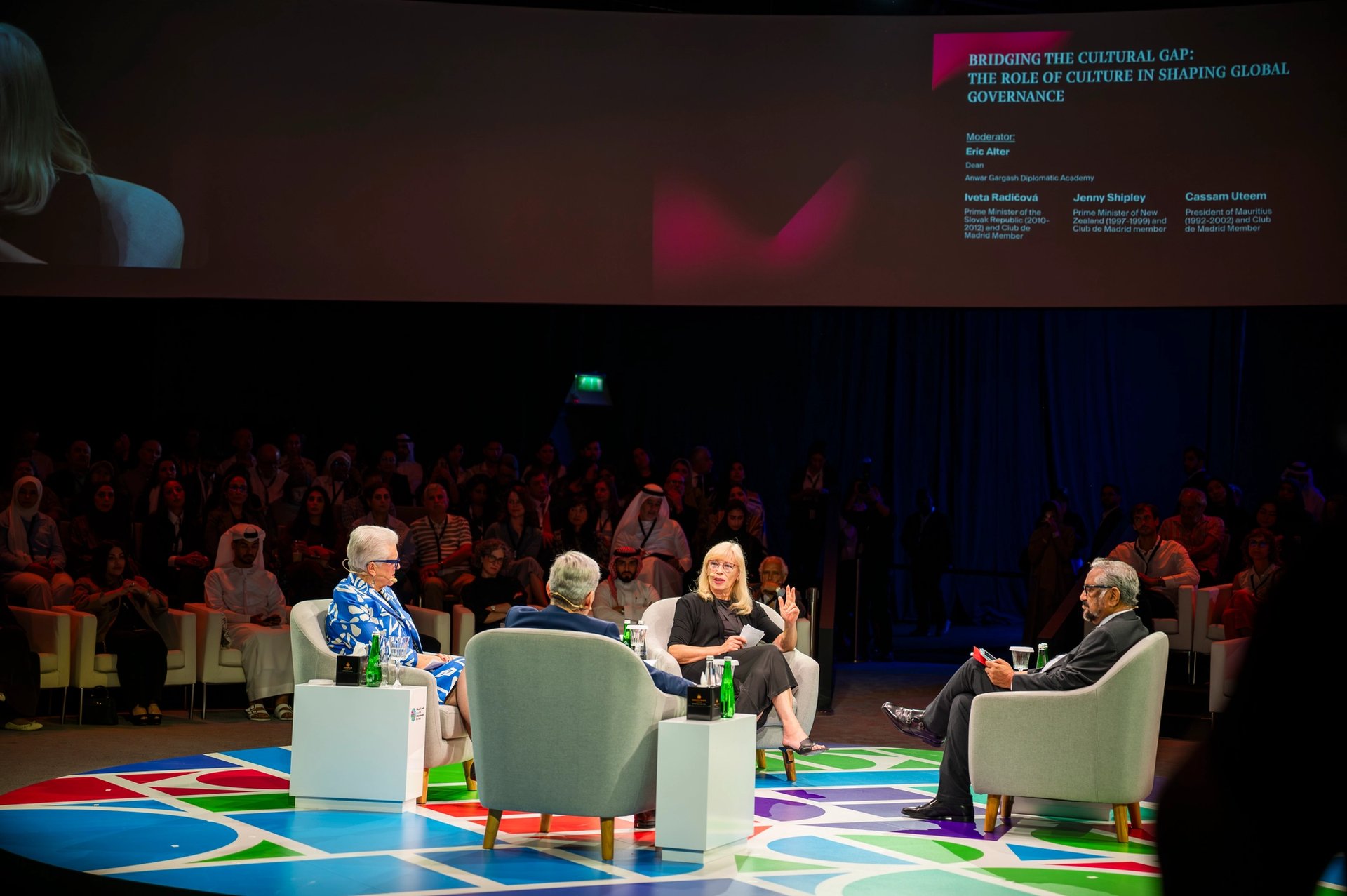
The session titled "Bridging the Gap: The Role of Culture in Shaping Global Governance" Photo: courtesy of Department of Culture and Tourism – Abu Dhabi
Elvira Dyangani Ose, the director of MACBA in Barcelona, came closest with a talk on “the possible museum”. Her subject was the necessity of involving local communities in what she called the “co-creation” of the narratives of the museum. “Most of us will agree that the mission of the museum is to bring art and culture — no matter how plural, no matter how beautiful, to the specific context in which the museum is situated,” she said. “Our role is to foster critical and socially engaged minds, all hoping to create a transformative impact on communities and the environments they inhabit.”
Other panels focused on the benefits large cultural projects have brought to major cities: the Mori Art Museum sites in Tokyo, the V&A East Museum and the Storehouse in London, as well as public commissions such as Christo and Jean-Claude’s The Gates in 2005 and Olafur Eliasson’s New York City Waterfalls in 2008 when Michael Bloomberg was mayor.
There was no reference to issues that once exercised the Western media during the construction of Abu Dhabi’s museums: the working conditions of immigrant labourers, for example. Other controversial topics— Russian actions in Ukraine, the war in Gaza, US President Donald Trump’s culture wars— were mentioned obliquely or not at all.
In breaks between sessions, many said it was hard not to be impressed by Abu Dhabi’s cultural developments. The closing days of the first Public Art Abu Dhabi Biennial coincided with the summit, while the new teamLab Phenomena, which is wowing visitors, opened two weeks before.
“This is an incredibly ambitious new cultural realm,” said Mariet Westermann, the new director the Guggenheim Museum and Foundation. Until recently, she was the vice chancellor of New York University Abu Dhabi. “It is utterly inspiring to work in a country with a long-term vision and the willingness to put resources, thought and effort into its activities.”
With nearly 20 years of investment, of which the Culture Summit is a part, perhaps the biggest takeaway was that, as far as spending on the arts goes, Abu Dhabi is putting its money where its mouth is. Several people from what used to be called the “mainstream” art world said they wished their own governments would do the same—hard as that is, in the current fiscal climate, to imagine.
• The Art Newspaper is a media partner of the Abu Dhabi Culture Summit


